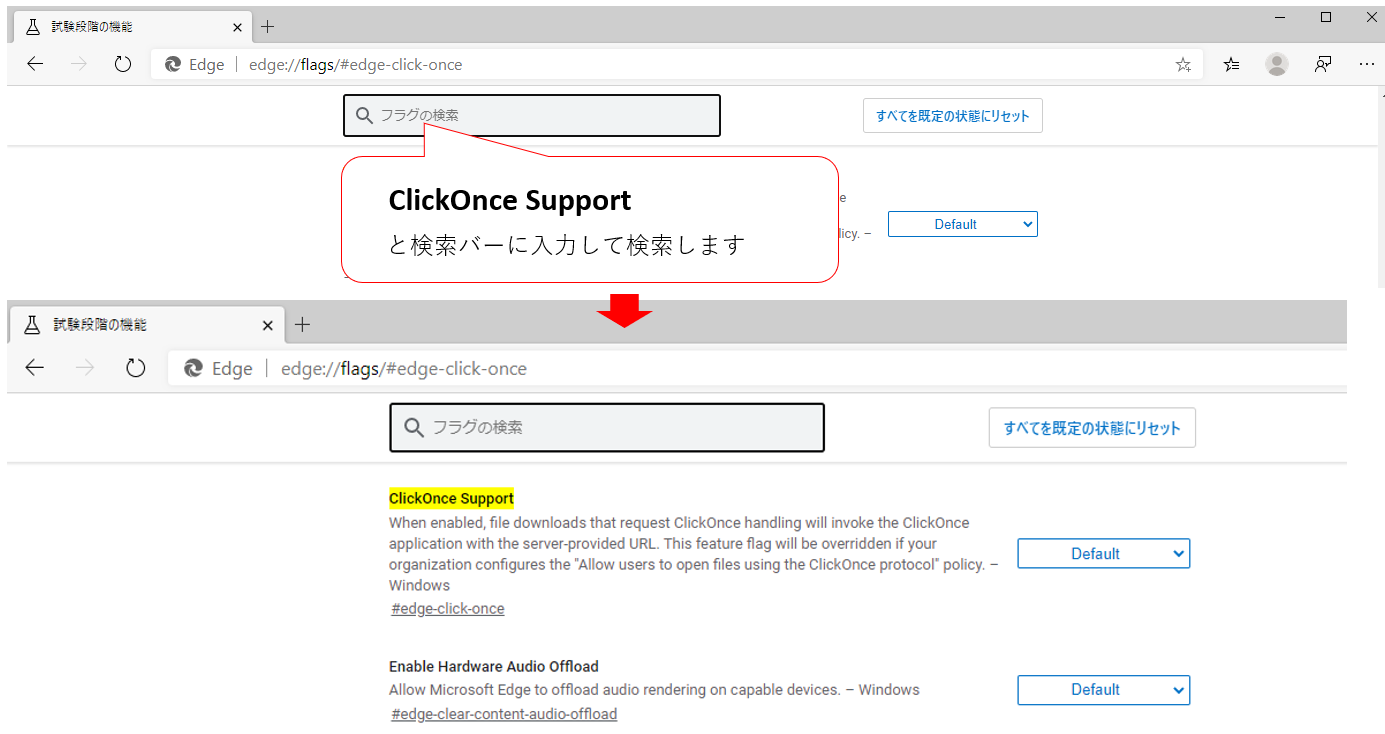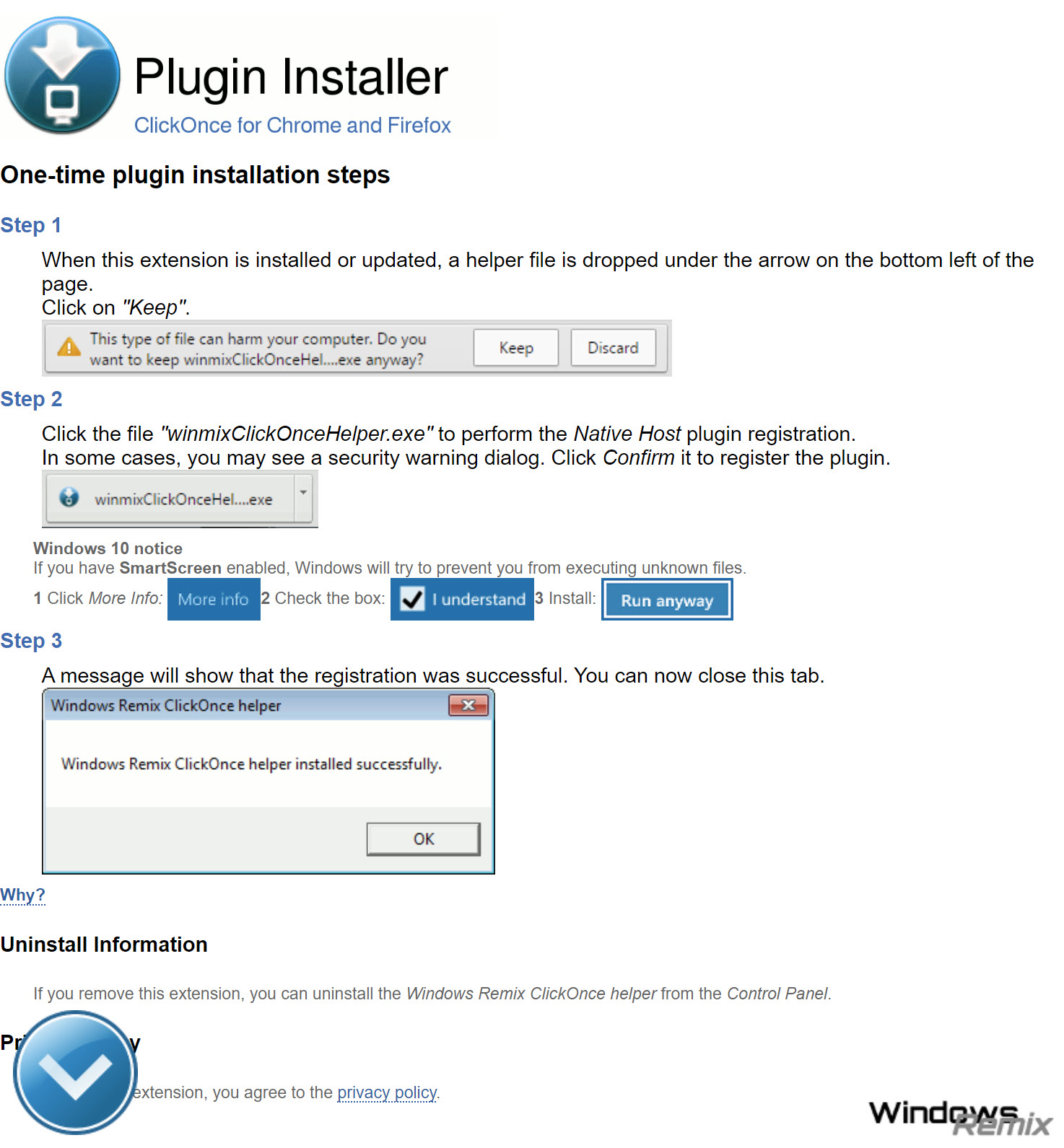Clickonce Edge Chromium
ClickOnce is enabled by default in Microsoft Edge 87, which reduces the barriers for enterprises to deploy software and better align with Microsoft Edge Legacy browser behavior. Starting in Microsoft Edge 87, the ClickOnceEnabled policy's 'Not configured' state will reflect the new default ClickOnce state of Enabled (as compared to the previous. Microsoft Edge Chromium (Edge 2020) and ClickOnce - Deltek Ajera1) Enter edge://flags link in Edge Chromium browser.2)Scroll down to ClickOnce Support settin. Microsoft Edge Chromium (Edge 2020) and ClickOnce - Deltek Ajera - YouTube Microsoft Edge Chromium (Edge 2020) and ClickOnce - Deltek Ajera1) Enter edge://flags link in Edge Chromium. To enable ClickOnce support in Edge Chromium: 1. Enter edge://flags link in Edge Chromium browser. Scroll down to ClickOnce Support setting and select ‘Enable’ from the dropdown list. Restart the browser. For other browsers: To add the ClickOnce extension to Google Chrome browser or Mozilla Firefox browser, see instructions below.
Alongside all the features and improvements in the roadmap for the new version of Microsoft Edge based on the Chromium engine, Microsoft includes a compatibility mode using the Internet Explorer rendering engine to load old websites.
The feature is known as “IE Mode,” and it has been designed for organizations to load internal sites without using a separate browser or having to redesign the site. The new approach loads the pages within Microsoft Edge like a regular website without using and managing multiple browsers.

If you want to start using it, the version of Microsoft Edge available through the stable channel now includes the “Internet Explorer compatibilities” settings to quickly enable IE Mode and a separate option to open Edge when browsing an incomparable website with Internet Explorer. Alongside the settings, it also possible to use the Group Policy Editor to configure the compatibility mode.
In this guide, you will learn the steps to enable IE Mode to load legacy websites using the Internet Explorer rendering engine on Chromium Edge for Windows 10. (You can also watch this video tutorial to configure the feature.)
How to enable IE mode on Microsoft Edge

To enable IE mode on Edge, use these steps:
Open Microsoft Edge on Windows 10.
Click the Settings and More (ellipsis) button on the top-right corner.
Select the Settings option.
Click on Default browser.
Under the “Internet Explorer compatibility” section, turn on the “Allow sites to be reloaded in Internet Explorer mode” toggle switch.
Click the Restart button.
Once you complete the steps, when sites require Internet Explorer, you can use Microsoft Edge to reload the page using IE mode.
Open site with IE Mode on Edge
After the IE Mode is enabled, you need to reload a page with the compatibility mode manually.
To open an incompatible website with IE Mode on Edge, use these steps:
Open Microsoft Edge on Windows 10.
Click the Settings and More (ellipsis) button on the top-right corner.
Select the More tools submenu and choose the “Reload in Internet Explorer mode” option.
After you complete the steps, the website should reload in compatibility mode. If the feature is not enabled, then the option won’t be available in the menu.
If you want to exit IE Mode, you can use the same instructions, but on step No. 3, select the Exit Internet Explorer mode option.
Open Internet Explorer sites on Microsoft Edge
On Windows 10, Microsoft Edge also lets you configure the browser so that when someone is using Internet Explorer incompatible or all sites will load within Edge.
To let IE open websites with Edge, use these steps:
Open Microsoft Edge on Windows 10.
Click the Settings and More (ellipsis) button on the top-right corner.
Select the Settings option.
Click on Default browser.
Under the “Internet Explorer compatibility” section, use the “Let Internet Explorer open sites in Microsoft Edge” drop-down menu and select the option to handle browsing when using Internet Explorer, including:
- Never – IE will never switch to Edge to load the site.
- Incompatible sites only – IE will still load sites, but websites designed for a modern browser will load in Edge.
- Always – IE will always switch to Edge to load websites.
Once you complete the steps, when surfing the web in Internet Explorer, websites will open on Microsoft Edge, according to your configuration.
How to enable IE mode with Group Policy on Microsoft Edge
Alternatively, you can also enable IE Mode on Chromium Edge with Group Policy. However, you will need to download and install the policy template before you can configure the Group Policy settings.
Install Microsoft Edge policy template
To install the policy template to enable IE Mode on Edge, use these steps:

Open Microsoft Edge for business website.
Under the “Policy File” section, click the Download button.
Select the version of Microsoft Edge. (Usually, you want to use the latest stable version available.)
Select the build (latest version available).
Select the platform — for example, Windows 64-bit.
Click the Get policy files option.
Click the Accept & download button.
Double-click to open the MicrosoftEdgePolicyTemplates.zip file.
Click the Extract all button from the “Compressed Folder Tools” tab.
(Optional) Select the location to extract the files.
Check the Show extracted files when complete option.
Click the Extract button.
Browse the following path inside the (extracted) “MicrosoftEdgePolicyTemplates” folder:
Select the msedge.admx and msedgeupdate.admx files and click the Copy option from the “Home” tab.
Quick tip: You only need to copy the “msedgeupdate.admx” file if you want to control the update settings of Microsoft Edge.Browse to the following path:
Click the Paste button from the “Home” tab.
In the “admx” folder, inside the “MicrosoftEdgePolicyTemplates” folder, open the language folder that represents your language — for example, en-US.
Select the msedge.adml and msedgeupdate.adml files and click the Copy option from the “Home” tab.
Quick tip: You only need to copy the “msedgeupdate.adml” file if you also copy the file on step No.12.Browse to the following path that matches your language:
In the above command, make sure to change en-US for the folder that matches your language.
Click the Paste button from the “Home” tab.
Clickonce Edge Chromium Browser
Once you complete the steps, the new policies to enable or disable IE Mode on Edge Chromium will install in the Group Policy Editor.
Enable IE Mode on Microsoft Edge
To enable IE Mode on Chromium Edge with Group Policy, use these steps:
Open Start.
Search for gpedit and click the top result to open the Group Policy Editor.
Browse the following path:
Double-click the Configure Internet Explorer integration policy.
Select the Enabled option to enable IE Mode for Microsoft Edge.
Under the “Options” section, select the Internet Explorer mode from the dropdown menu.
Click the Apply button.
Click the OK button.
After you complete the steps, websites will render in compatibility mode, and you’ll notice a familiar IE icon on the left side of the address bar letting you know the website is using Internet Explorer.
These steps enable IE Mode for intranet websites. If you want to load external websites using Chromium Edge, you need to enable and set up the “Configure the Enterprise Mode Site List” policy, which includes the creation of an XML file with the list of domains that you want to load automatically with the Internet Explorer mode.
Clickonce Edge Chromium Software
Update February 11, 2021: This guide has been revised with the steps to configure IE Mode on the Chromium version of Microsoft Edge using the new compatibility settings and updated the process to install the Group Policy templates.
Get The Recommended Extension
The recommended extension ClickOnce Deployment is Meta4 ClickOnce Launcher by Meta4 Spain S.A.
Additional Information
PROXY Pro v8.10 and later support using the Google Chrome browser, and the 'new' Microsoft Edge (v77 and later) browser, for accessing the Web Console. However, because the Web Console uses Microsoft Windows ClickOnce deployment for the Host on Demand ('Share my Desktop'), Remote Desktop Connection Window, and Recording Player Window, some additional requirements apply.
These browsers do not have native support for Microsoft Windows ClickOnce deployment. An addin is required to provide this support. There are several good choices to provide this support.Clickonce Edge Chromium Free
PROXY Pro v8.10.1 hotfix#4 and later supports using the Meta4 ClickOnce Launcher by Meta4 Spain S.A. This is the recommended extension to support ClickOnce deployment for all PROXY versions.
PROXY v10.0 Hotfix#2+ (build 3470 or later) and PROXY v9.0.1 Hotfix#8 (build 3100 or later) support using ClickOnce for Google Chrome by menarva.com (Menarva Ltd). This is the recommended extension if the Meta4 extension is not available or appropriate.
PROXY v10.0 Hotfix#2+ (build 3470 or later) and PROXY v9.0.1 Hotfix#8 (build 3100 or later) also support using Windows Remix ClickOnce Helper by windowsremix.com.
Alternately, the 'IE Tab' addin uses the Microsoft Internet Explorer engine within the Chrome application frame to render selected web sites. By using the Internet Explorer engine, all IE features are supported, including ClickOnce deployment support.
Known Issues

There is a known issue in Chrome 73 (March 2019) where ClickOnce extension helpers do not function correctly. This problem occurs in Chrome v73.0.3683.86 and has been fixed in Chrome v73.0.3683.103 (April 2019) or later. See https://crbug.com/941653 for more information.

